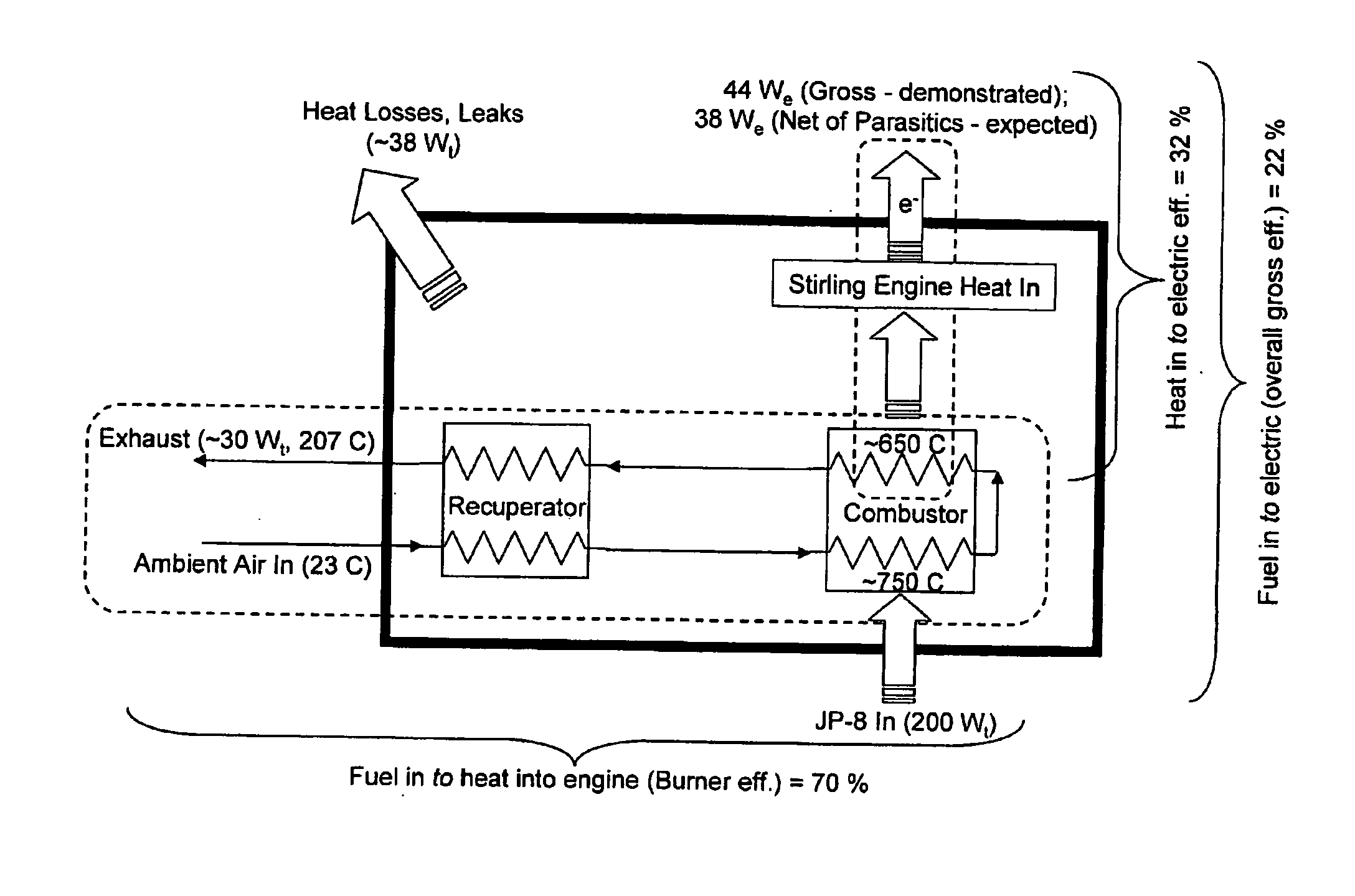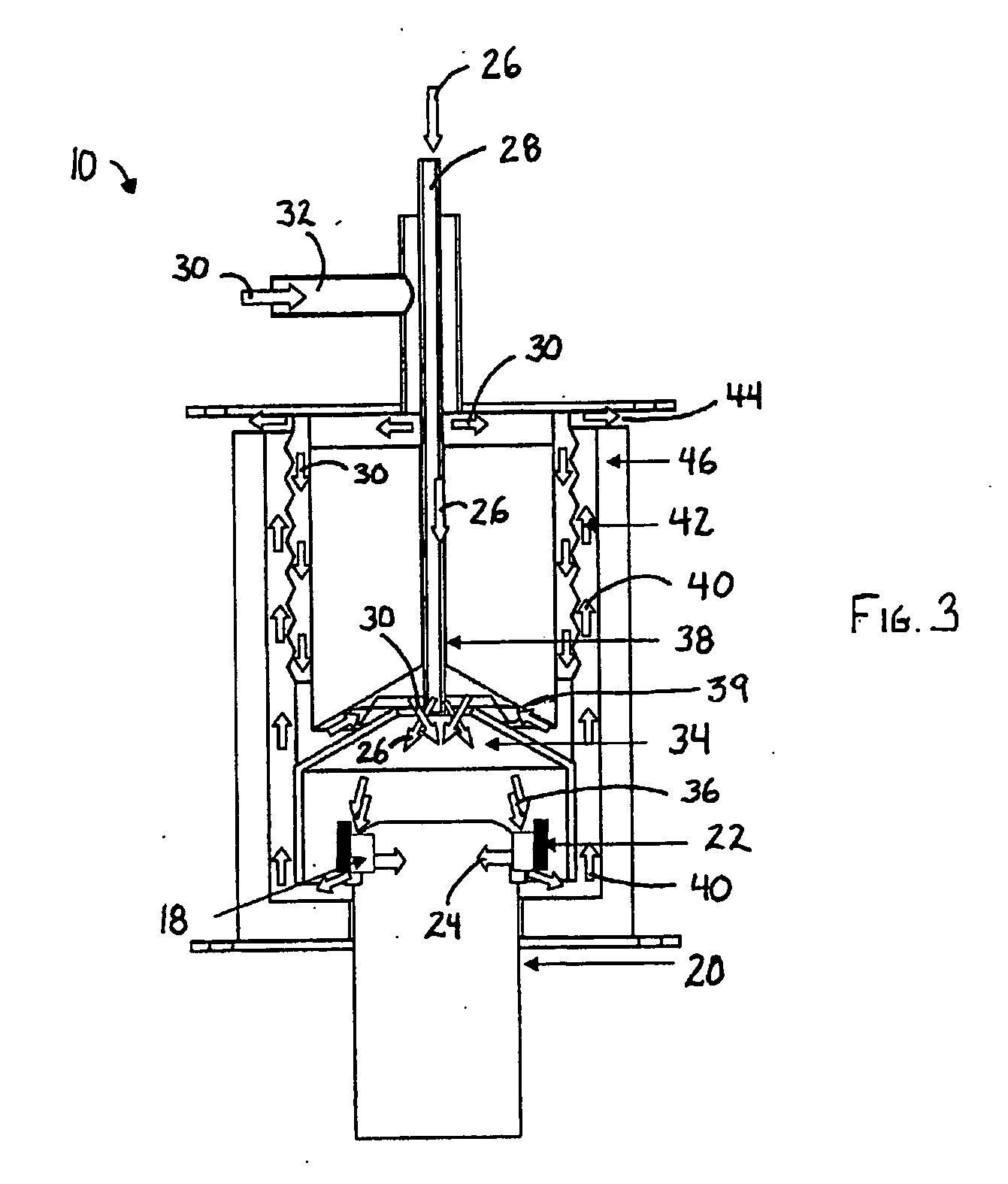Catalytic burner apparatus for stirling engine
a technology of catalytic burner and stirling engine, which is applied in the direction of lighting and heating apparatus, machines/engines, indirect heat exchangers, etc., can solve the problems of enhancing the efficiency of the operation of the stirling engine, requiring an external heat source to operate, and still exists in the art in the field of stirling engine enhancement efficiency, etc., to achieve enhanced transport properties, avoid boundary layer buildup, and increase the reactivity area
- Summary
- Abstract
- Description
- Claims
- Application Information
AI Technical Summary
Benefits of technology
Problems solved by technology
Method used
Image
Examples
Embodiment Construction
[0066]In a preferred aspect, the present invention provides a simple, efficient and effective catalytic reactor apparatus for generating heat and transferring the heat via conduction to the heater head of an external combustion engine. The apparatus comprises:[0067](a) a combustor into which is internally secured a heater head of an external combustion engine, the combustor comprising a chamber for mixing fuel and air;[0068](b) a fuel injection path for feeding a liquid fuel into the chamber;[0069](c) an air injection path for feeding air into the chamber;[0070](d) a catalytic reactor in direct contact with the heater head, the catalytic reactor comprising a catalyst deposited on ultra-short-length-channel metal elements;[0071](e) an igniter for lighting off the catalyst and thus initiating flameless combustion of the fuel with air; and[0072](f) an outlet port for exhausting combustion gases.
[0073]In another preferred aspect, this invention comprises an external combustion engine ha...
PUM
 Login to View More
Login to View More Abstract
Description
Claims
Application Information
 Login to View More
Login to View More - R&D
- Intellectual Property
- Life Sciences
- Materials
- Tech Scout
- Unparalleled Data Quality
- Higher Quality Content
- 60% Fewer Hallucinations
Browse by: Latest US Patents, China's latest patents, Technical Efficacy Thesaurus, Application Domain, Technology Topic, Popular Technical Reports.
© 2025 PatSnap. All rights reserved.Legal|Privacy policy|Modern Slavery Act Transparency Statement|Sitemap|About US| Contact US: help@patsnap.com



